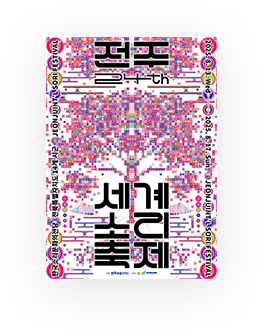d-day
D
+
291


2025. 8. 13. Wed - 2025. 8. 17. Sun

Opening Concert <Japsaek X>
※ Conversations with Audiences (After the Performance, Approximately 30 Minutes on 15th Aug))
Nongak on the Modern Stage Form
2024 Jeonju International Sori Festival celebrates its 10th anniversary of the designation of “nongak” as a UNESCO Intangible Cultural heritage, with an opening performance based on Jeonju’s nongak.. The Festival’s opening performance <Japsaek X> pays attention to the diverse places encountered in the process of traveling from village to perform pungmulgut rituals. The places where pungmulgut takes place, including the dangsan tree, wells, kitchens, and pan (venue of performance), are brought into the space of a contemporary theater and reconstructed in a theatrical way.
Pungmulgut from an Outsider’s Eye
<Japsaek X> begins with the perspective of strangers outside the traditional territory of pungmulgut. The concept was articulated by director Jeokgeuk, who has communicated with audiences through sensual and experimental works, including “Jangdan DNA: Kim Yong-bae's Sensation” and “Ethnos of Jangdan: Baudeogi Transformer.” Music directors Won Il and Shin Wonyoung, who have been at the forefront of the contemporizing traditional music, will suggest a musical approach to the origins of pungmulgut.
Music of the people, Community of Japsaek
Nongak is the music of and for the faceless and nameless people. In this tradition of synthetic performance, there are performers called dwichibae (lit. “back” percussionists), or japsaek, who play a supporting role alongside abchibae (“front” percussionists) who perform musical functions. Called the “actors in nongak performances,” japsaek are marginalized people who have become nothing, and the same time, who have infinite possibilities of becoming anything, which can be extended to ordinary citizens living their present and to the entire audience watching the performance. Imsil Pilbong Nongak, who has been practicing community-based nongak, performs on this stage of “nongak by and for the audience of the here-and-now.”